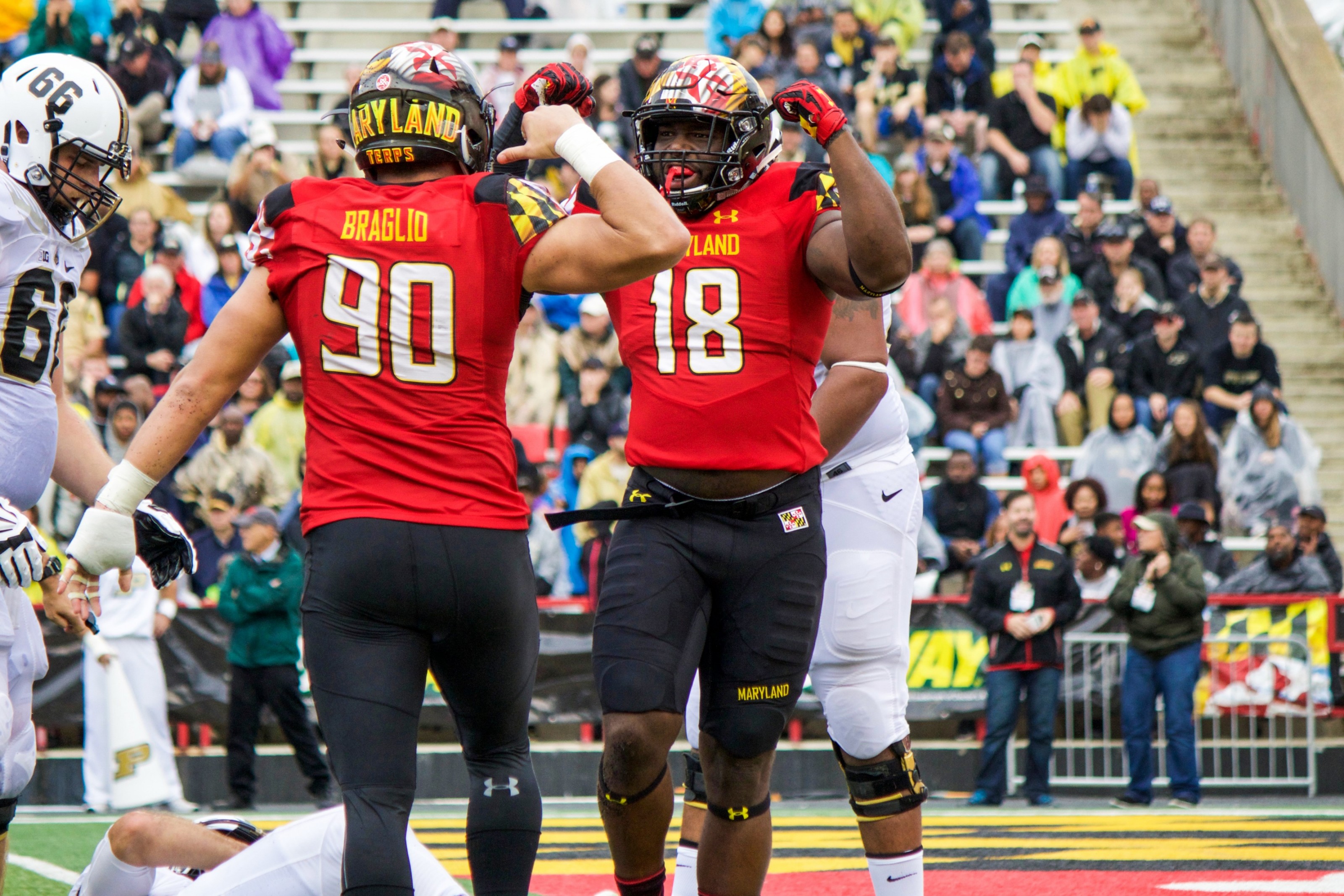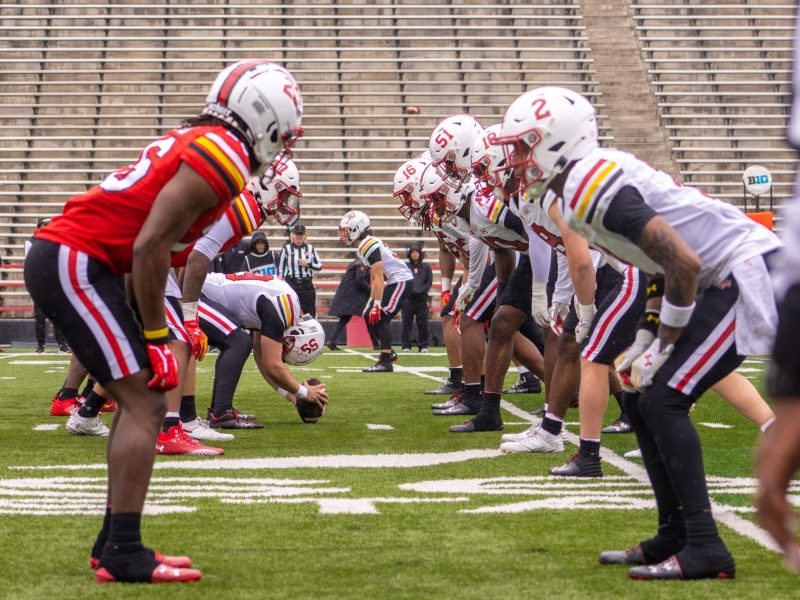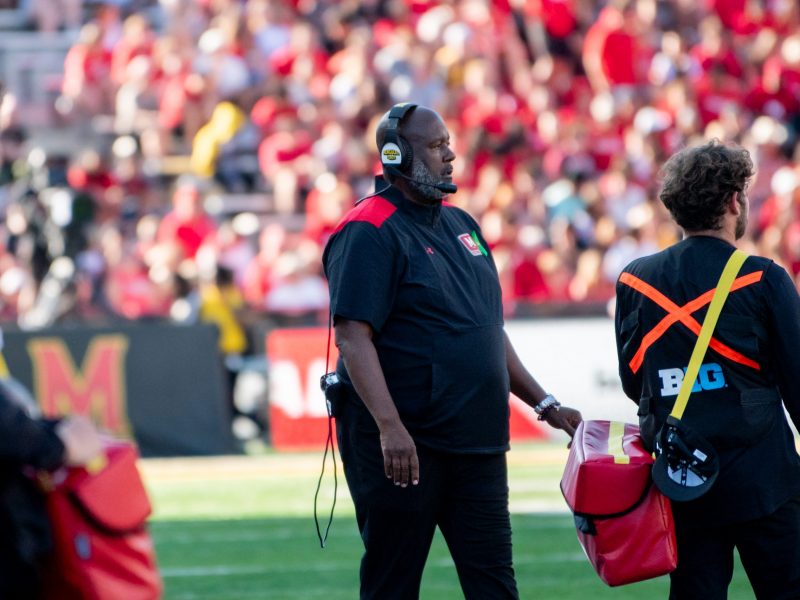One play stood out in Maryland football defensive coordinator Andy Buh’s mind as he spoke at his weekly press conference Wednesday afternoon, three days before the Terps attempt to bounce back against Minnesota.
With eight minutes left in the third quarter of Penn State’s 38-14 win Saturday afternoon, Nittany Lions running back Saquon Barkley took a pitch and ran to his right. Cornerback Will Likely charged up to make the stop about four yards behind the line of scrimmage, but Barkley hurdled him, beat the other defenders to the edge and tightroped along the sideline for a 13-yard gain.
Buh cited Barkley’s speed, elusiveness and ability to “stop on a dime” as reasons Maryland struggled containing the sophomore, who rushed for 209 yards on 31 carries. In preparation for the Golden Gophers, Buh noticed some of the same traits in running backs Rodney Smith and Shannon Brooks.
For the Terps to move one win away from bowl eligibility, it’s imperative they force Minnesota to try to beat them through the air.
“They can break tackles. Several teams that they have played have had a hard time tackling them after first contact,” Buh said. “So a lot of hats to the ball, keeping our eyes up, practicing good fundamentals, swarming the ball … and limiting the times we are in one-on-one situations with them because they are pretty dynamic.”
On the surface, the Terps run defense excelled over their first four games, allowing 119 yards a game en route to starting 4-0.
But look closer and you’ll see signs of weakness. Central Florida rushed for nearly 200 yards. Florida International had 202 on the ground. Maryland’s versatile running attack provided more than enough offense to secure victories in the contests, and the success hid the Terps’ flaw.
Then came the Nittany Lions, who exploited the Terps by rushing for 372 yards, 81 of which were from dual-threat quarterback Trace McSorley.
Penn State posted those numbers despite entering urday’s contest last in the Big Ten in rush yards per game (108.2). Now the Terps will go up against the conference’s fifth-best rushing offense, which, thanks to Smith and Brooks, rushes for 203 yards a game.
The Terps will have the advantage if they can limit the duo, especially because Minnesota will be without starting quarterback Mitch Leidner, who suffered a concussion against Iowa on Saturday.
Leidner rushed for 174 yards on 40 carries over the Golden Gophers’ first five games, but he’ll watch from the sideline as redshirt junior Conor Rhoda, a former walk-on, takes the field at Maryland Stadium having attempted two career passes.
Rhoda will likely manage the game, handing the ball to either Smith or Brooks and dropping back to pass only when necessary. The Terps can derail that plan by shutting down the run, forcing Rhoda to make plays with his arm in front of what should be a solid crowd on Saturday afternoon.
In preparation for Minnesota’s run game, Buh brought some drills from fall camp to practice this week — he called them “oldies but goodies” — to emphasize hand placement and getting off blocks.
The “Terp drill” emphasized aggression and individual clashes.
“Just one-on-one blocking,” Buh said. “Man-to-man, nose-to-nose.”
Defensive end Melvin Keihn said the exercise helped the Terps “hype things back up” and allowed players to hit each other more than they had earlier in the season. Saturday, they’ll target that physicality toward defending Minnesota’s two-headed running attack.
The task will be a major factor in determining whether Durkin’s squad can avenge its first 2016 loss.



